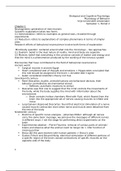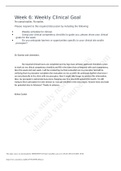Samenvatting
Summary Physiology of Behavior book 12th ed. - All chapters relevant for the Final Exam
- Instelling
- Vrije Universiteit Amsterdam (VU)
(Language: ENG) Summary of the Physiology of Behavior (12th ed.) book. Contents are derived from all chapters that were explicitly mentioned in the syllabus as components of the final and interim exam. Includes complementary information from lectures and images from both the book and lectures. Cov...
[Meer zien]






